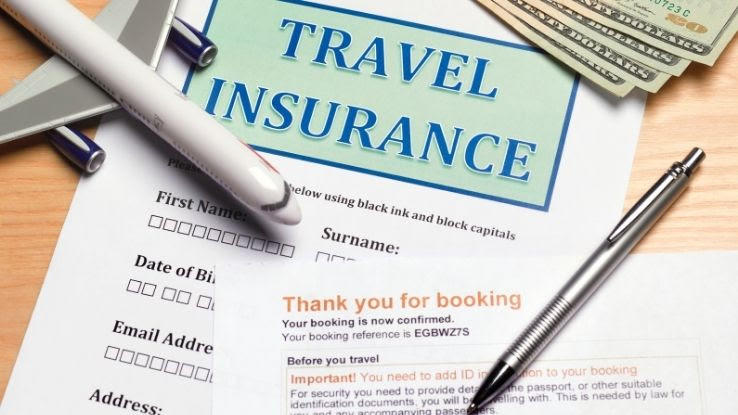Some Known Incorrect Statements About Pacific Prime
Some Known Incorrect Statements About Pacific Prime
Blog Article
The Best Strategy To Use For Pacific Prime
Table of ContentsPacific Prime - TruthsEverything about Pacific PrimePacific Prime Can Be Fun For EveryoneExcitement About Pacific PrimeThe Main Principles Of Pacific Prime

This is due to the fact that the data were gathered for a period of solid financial efficiency. Of the estimated 42 million individuals who were uninsured, almost concerning 420,000 (concerning 1 percent) were under 65 years of age, the age at which most Americans end up being eligible for Medicare; 32 million were grownups between ages 18 and 65, about 19 percent of all grownups in this age; and 10 million were children under 18 years old, concerning 13.9 percent of all children (Mills, 2000).
These quotes of the number of persons without insurance are created from the annual March Supplement to the Current Population Survey (CPS), performed by the Demographics Bureau. Unless otherwise kept in mind, national quotes of individuals without medical insurance and percentages of the populace with various sort of insurance coverage are based on the CPS, one of the most extensively made use of resource of quotes of insurance protection and uninsurance prices.
An Unbiased View of Pacific Prime

Still, the CPS is particularly valuable due to the fact that it generates annual quotes fairly promptly, reporting the previous year's insurance coverage approximates each September, and because it is the basis for a consistent set of quotes for greater than twenty years, enabling evaluation of trends in insurance coverage with time. For these reasons, as well as the considerable use the CPS in various other research studies of insurance coverage that are provided in this record, we count on CPS estimates, with limitations kept in mind.

The price quote of the number of uninsured individuals broadens when a population's insurance policy status is tracked for numerous years. Over a three-year duration starting early in 1993, 72 million people, 29 percent of the U.S. https://penzu.com/p/79996ae8dade0171. populace, lacked protection for at the very least one month. Within a single year (1994 ), 53 million people experienced at the very least a month without coverage (Bennefield, 1998a)
6 out of every 10 uninsured grownups are themselves employed. Functioning does improve the likelihood that one and one's family participants will certainly have insurance coverage, it is not a guarantee. Even members of families with 2 permanent wage earners have almost a one-in-ten possibility of being without insurance (9.1 percent uninsured rate) (Hoffman and Pohl, 2000).
Not known Incorrect Statements About Pacific Prime
New immigrants make up a substantial percentage of individuals without medical insurance. One analysis has connected a substantial section of the current growth in the dimension of the united state without insurance population to immigrants who showed up in the country in between 1994 and 1998 (Camarota and Edwards, 2000). Recent immigrants (those that involved the USA within the past four years) do have a high rate of being uninsured (46 percent), yet they and their youngsters represent just 6 percent of those without insurance policy country wide (Holahan et al., 2001).
The connection between wellness insurance coverage and accessibility to care is well developed, as documented later in this phase. The connection in between health and wellness insurance coverage and health results is neither straight neither straightforward, a considerable professional and health services study literature web links wellness insurance policy protection to improved access to care, better top quality, and improved personal and populace health standing.
Degrees of analysis for analyzing the effects of uninsurance. This conversation of wellness insurance protection concentrates largely on the U.S. populace under age 65 since virtually all Americans 65 and older have Medicare or other public coverage. Moreover, it focuses specifically on those with no medical insurance for any length of time.
An Unbiased View of Pacific Prime
The problems faced by the underinsured are in some respects similar to those faced by the uninsured, although they are typically less serious. global health insurance. Uninsurance and underinsurance, nonetheless, entail distinctly various plan concerns, and the approaches for resolving them might differ. Throughout this research study and the five reports to follow, the main focus gets on individuals without wellness her response insurance policy and hence no aid in spending for healthcare past what is readily available with charity and safety and security net organizations
Medical insurance is a powerful element impacting receipt of care due to the fact that both individuals and doctors respond to the out-of-pocket price of solutions - https://www.webtoolhub.com/profile.aspx?user=42386420. Medical insurance, however, is neither required nor sufficient to gain access to clinical solutions. The independent and straight impact of health and wellness insurance protection on accessibility to health and wellness services is well developed.
Others will certainly acquire the health treatment they need also without health and wellness insurance, by spending for it out of pocket or seeking it from providers that offer treatment totally free or at highly subsidized rates. For still others, medical insurance alone does not ensure receipt of care since of various other nonfinancial barriers, such as a lack of wellness treatment suppliers in their area, minimal access to transport, illiteracy, or linguistic and cultural distinctions.
Not known Incorrect Statements About Pacific Prime
Official study about uninsured populations in the United States dates to the late 1920s and very early 1930s when the Board on the Price of Medical Treatment produced a series of reports about financing doctor workplace brows through and hospitalizations. This issue ended up being prominent as the numbers of medically indigent climbed during the Great Clinical depression.
Report this page